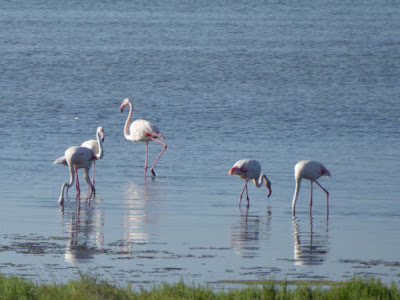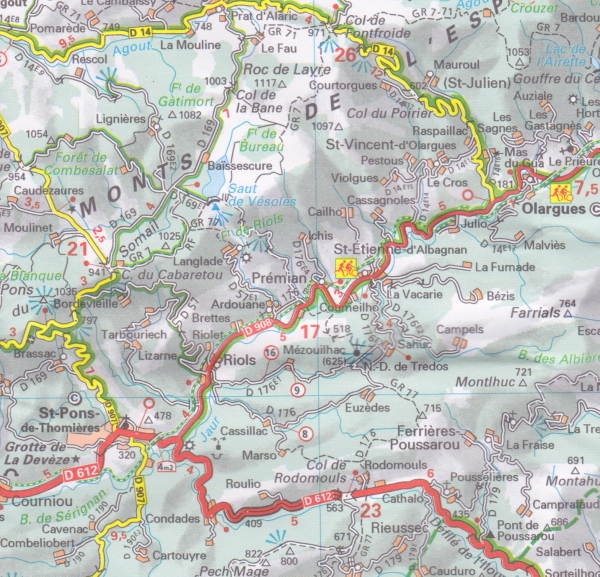 |
| Méthamis - one of many hilltop villages |
How would you like all your holiday rides dominated by a giant? A giant so big it looms above you everywhere you go. A giant that threatens, that beckons and that promises pain if you take up its challenge. A giant that entices, tempts and seduces.
This giant is the Géant de Provence. The mountain on every cycle famatic's bucket list. Almost 2000m high it dominates the landscape. Visible from 70km away. This giant is different to the giant cols and peaks of the Pyrenenees. It stands alone unchallenged.
However there is more to cycling in the Vaucluse area of Provence than belting up the Mont Ventoux seeing only your time and heart rate.
The air is heavy. The sun, hot. The Mediterranean light shimmers. Colours are sharper apgainst the blue sky. Villages of honey–coloured stone, never more than a few kilometers apart are linked by a confusing web of country lanes. Some stand aloft rocky prominences. Others squeeze the traffic to a crawl through narrow streets. Each is different. Each has the same charm.
The roads swelter in the summer sun. Dusty hedgerows of wild herbs giving off a heady scent. Vineyards on either side with tempting signs offering wine tasting. On the Sault plateau the lavender bushes are aligned in the rocky soil with military precision. Approaching harvest time the air is heavy with the scent and the vistas blue. Olive groves and cherry orchards. The countryside is bursting with goodness
 |
| Honey-coloured stone villages are never far apart |
The tourism department produces a fine set of suggested circuits ranging from an easy 25km to a challenging 120km. Route profiles and services along the way are detailed along with a map. The markers along the routes are sometimes hard to find but are hardly needed.
One of the highlights of the area is the Gorges de la Nesque, 20km of twisting cliff-edge riding with huge views. Recommended is the D5 road from Méthamis a steady climb through an landscape empty of habitation. A beautiful road with views across to the gorge. The hills, like this one, can go on a bit. But they are generally do–able. The road signs clear and markers indicate distances and altitude.,
People on bikes are everywhere in this area. Most motorists are considerate (if sometimes frustrated). In Vaucluse the bike rules the road. Best of all is the friendliness of the french cyclists. Though some tourists fail to acknowledge other riders, the french, on minimalist racers, have a word of greeting or encouragement for others enjoying the pleasure of riding in Provence.
So though the Géant de Provence may dominate your visit, a ride up to it’s bald summit is not essential but may become irresistible. If so, success will be a highlight of your visit to this cyclist heaven.
Somewhere to stay: Auberge du Vin, a b&b surrounded on four sides by vineyards, down a dusty road. An old stone house on the north side of a walled courtyard. A great tree provides shade, a wisteria cools the large, stone communal table. A pool amid ancient stone walls. Shade beneath a fig tree. Easy–going, helpful and obliging hosts. French breakfasts with excellent coffee. Quiet. And continuously changing views of the Géant across the vineyards.
www.aubergeduvin.com/
 |
| Auberge du Vin, surrounded by vineyards with great views of the Mont Ventoux |























































